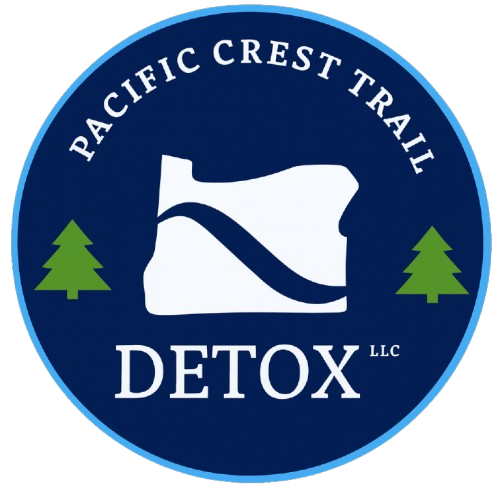Morphine is a powerful opioid, and like many prescription painkillers, it carries a high risk of dependence when used for long periods. Even when taken as prescribed, the body can become used to its effects. Over time, stopping morphine may feel impossible without help.
What often begins as relief after surgery, injury, or illness can slowly shift into physical, emotional, and mental dependence.
However, if you’re struggling, know that you’re not alone. Morphine detox and comprehensive treatment can help you heal.
Even when taken exactly as prescribed, morphine can slowly cause physical dependence. Developing dependence or a substance use disorder (SUD) isn’t simply about willpower; it’s about how the body responds to ongoing exposure.
Here’s how morphine dependence can develop, even when you’re taking it as prescribed:
Your body gets used to the effects of morphine. Over time, the same dose doesn’t bring the same level of relief. You may start needing more to get through the day, not to feel high but just to feel “normal.”
When the drug wears off, discomfort sets in. This can include sweating, restlessness, body aches, and anxiety. These symptoms often show up within hours and may push you to take more just to feel okay again.
Morphine boosts dopamine, which is the brain’s “feel good” chemical. Over time, your brain slows its own dopamine production and begins to rely on the drug. This makes it harder to feel joy, connection, or motivation without morphine in your system.
These changes can happen gradually, making it easy to miss the signs until stopping morphine feels overwhelming.
Morphine detox is the first step toward getting back in control from these symptoms – both physically and emotionally.
At PCTD, we help adults safely manage withdrawal in a supportive and comfortable environment. Our team of healthcare providers and doctors offer 24/7 care to guide you through this process with structure, compassion, and respect.
When someone stops morphine use after a period of regular or prolonged SUD, the body goes through a readjustment process called withdrawal.
Withdrawal isn’t life-threatening in most cases, but it can be extremely uncomfortable. Symptoms usually begin within 12 to 24 hours after the last dose and can last for over a week, depending on the length and severity of the SUD.
Common symptoms of morphine withdrawal include:
Morphine withdrawal doesn’t just affect the body; it also impacts mood and mental health. Many people experience:
These emotional symptoms can feel just as overwhelming as the physical discomfort, which is why support during detox is so critical.
We know how challenging withdrawal can be. That’s why our team of experienced providers at PCTD is trained to manage every stage of morphine detox, all the way from the first wave of symptoms to the emotional ups and downs that follow.
We don’t just monitor vital signs – we pay attention to your whole experience. Whether you’re struggling with sleep, anxiety, or just need someone to talk to, we’re here to walk through it with you.
With daily provider visits, home-cooked meals, and a relaxed setting, we make sure you don’t feel alone during one of the hardest parts of recovery.
While detox is the first step, recovery doesn’t have to wait. Clients at PCTD begin engaging in their healing process through one or two daily group sessions. These groups are designed to be approachable and meaningful, not overwhelming.
Some of the group topics include:
It’s important to understand that medically supervised morphine detox is only the first step in treating morphine addiction, but it’s not a substitute for comprehensive addiction treatment.
To address both the physical and psychological aspects of morphine dependence and achieve long-term recovery, a combination of evidence-based and holistic therapies is crucial.
Here’s a breakdown of some options:
These therapies have been scientifically proven to be effective in treating substance use disorders:
CBT is a cornerstone of addiction treatment. It helps individuals identify and modify the negative thought patterns and behaviors that contribute to drug use.
In the context of morphine detox, CBT can help:
MI is a client-centered approach that helps individuals explore their ambivalence about change and increase their intrinsic motivation to stop using morphine.
Therapists work collaboratively with clients to:
By processing traumatic memories and developing healthier coping mechanisms, individuals can reduce the likelihood of using morphine to manage trauma-related distress.
Holistic therapies complement evidence-based treatments by addressing the individual’s overall well-being:
Mindfulness and meditation techniques can help individuals develop self-awareness, manage stress, and regulate emotions without relying on substances.
These practices can be particularly beneficial during the transition from morphine detox, as it helps individuals cope with the psychological discomfort of withdrawal and early recovery.
Engaging with nature can provide significant therapeutic benefits for individuals recovering from morphine addiction. Outdoor therapy can reduce stress, improve mood, and foster a sense of grounding and connection.
Regular physical activity can improve mood, reduce stress, and enhance overall physical and mental health. Exercise can also help manage withdrawal symptoms, improve sleep, and provide a healthy outlet for energy and emotions.
Creative expression through art can provide a non-verbal outlet for processing emotions, exploring trauma, and developing coping mechanisms.
This therapy can be particularly helpful for individuals who struggle with verbal communication or have difficulty expressing their feelings.
We understand how physically and emotionally drained people can feel when they begin morphine detox. That’s why our program supports more than just withdrawal. We also encourage rest, reflection, and renewal.
Our approach blends evidence-based care with practical, real-world support. While we offer clinical interventions like medication-assisted treatment (MAT), we also include:
At PCTD, detox is more than a pause—it’s a starting point. We’re not here to give you fluff. We’re here to help you build something real.
Morphine detox is a major accomplishment, but it’s not the finish line. Lasting recovery takes continued support, structure, and community. That’s why what comes after detox is just as important as detox itself.
At PCTD, we work closely with each client to plan their next step, which means no one leaves without a clear path forward. Whether you need a higher level of care or ongoing outpatient support, we are here to help connect you to trusted programs that align with your goals.
Recovery after morphine detox often includes:
The right level of care depends on your unique needs, but some kind of aftercare is always essential.
We help clients take those first steps by focusing on:
We want you to leave detox with more than a clean body – we want you to leave with direction, hope, and a plan.
Morphine detox doesn’t get easier the longer you wait. If you’re here, something in you is ready for change—and that’s more than enough to start.
At PCTD, we provide respectful and compassionate care with zero judgment. You’ll be surrounded by people who get it (many of whom have lived experience in recovery) and who know how to help.






